Shopping for an Outdoor Knife: The Essential Tool for Your Survival Kit
It’s interesting how whenever anyone mentions outdoor knives, that the image of someone in a black tank top and a bandana running through the woods with an 11” blade between his teeth immediately comes to mind.
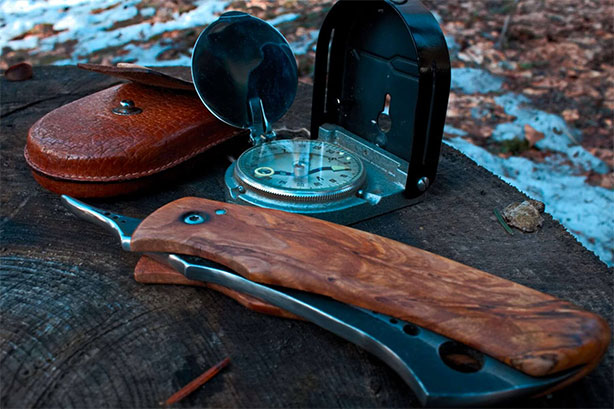
The truth is, a good knife for outdoors, one that’s going to be just as suitable for camping as is for hunting, is going to be a lot less extreme and a lot more practical than what most of us think it’ll be. Size only matters as far as the task at hand, and a knife that’s too big, too small, or too “anything” for the job is the one that no one’s going to want to bother carrying.
If you’re in the market to purchase a multi-purpose knife for outdoor use, let’s throw all the different types of knife designations to the side and look at the qualities that go into making a knife that’s good for virtually any outdoor activity.
Contents
The knife to count on
First, let’s be honest: a single knife can’t do everything. It’s why the most experienced hunters and outdoorsmen tend to carry more than one bladed tool with them when they’re heading out. It’s also what makes a uniquely well designed, all-purpose knife compulsory for hunting trips, backpacking, or as a survival tool kit essential. It’s not going to be a substitute for a hiking axe or a camping saw: it’s the knife that you’ll count on to dress a rabbit, to cut up kindling, or to defend yourself if necessary.
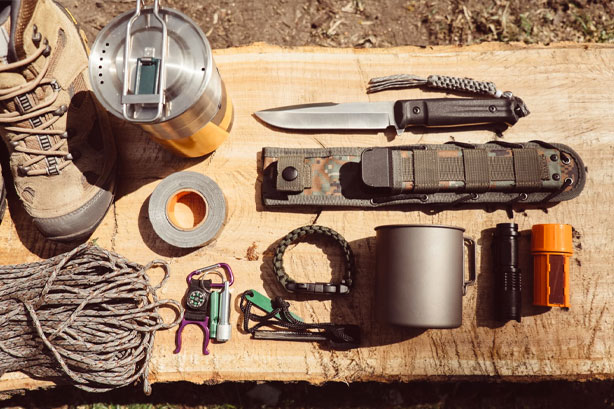
Ultimately, all the characteristics that really matter in a knife, specifically how it fits and feels in your hand, its sturdiness, and its simplicity, are going to be twice as critical in determining how well it complements any other bladed camping tools you take to the field. You can’t afford for it to not be up to the task, so there are a few criteria that need to be considered.
Fixed or Folded Blade
Choosing between a fixed or folding blade is probably the first decision that anyone makes when looking at a knife. For a blade that’ll be used almost exclusively outdoors, everything, from how easy it is to carry, to how simple it is to deploy, depends on it.
Folding knives are convenient. When you’re weighted down with a ton of bulky provisions, having a knife that can fold away easily and slide into your backpack or a cargo pocket is a highly appreciated respite. On the other hand, however, if you need to deploy it quickly and you need to do it with significant force, the time you’ll need to locate it and to make sure it’s locked it into position (and is going to stay locked) may not be a luxury that you have.
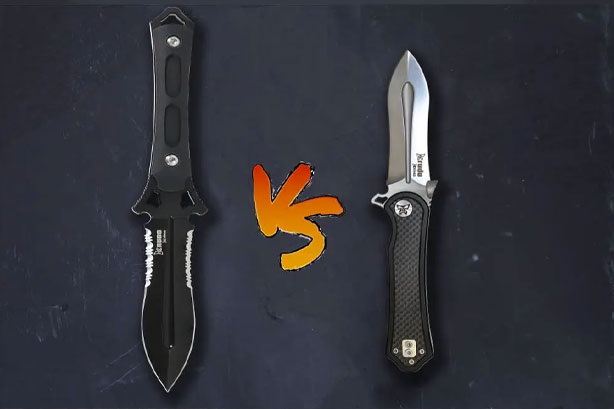
In short, as convenient as folding knives may be, a fixed blade that can be brought straight into service from its sheath in a single movement can prove to be a sturdy essential for your survival tool kit as well as a welcomed lifesaver.
Blade design
In fact, for most general outdoor activities, the choice of blade design is more likely to depend on personal preference than it is on any particular purpose. The reality is that while no single style of blade can do it all, any sharpened blade is capable of cutting – so most tasks can be accomplished reasonably well if approached carefully. Ranging from the tough twin-edged tanto, to the burly sheepsfoot, blade tips and curve styles are virtually limitless. Specialized features like serrations and blood grooves broaden the selections even further.
What you don’t want, however, is a blade that’s simply too large to be practical. In most cases, a 3” to 5” blade is going to be the optimal length for most outdoor activities, regardless of whether it’s skinning a fish or cutting a length of rope. You’ll quickly realize that not only are smaller blades better for ordinary tasks, that they’re also easier to handle and weigh noticeably less.
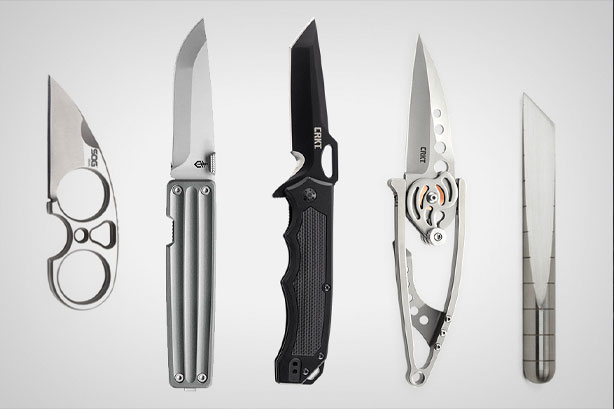
Blade material
While practically every aspect of a knife is at least somewhat negotiable, there’s very little room for compromise on blade material. Again, the choices can vary, and both hard and soft steels each have their advantages. But for the outdoorsman, a hard blade that’s thick, has a full tang, sharpens easily, and won’t give way to the elements is going to be the best choice.
High carbon steel is easy to appreciate because of its strength and the edge it holds, while stainless steel, a mixture of high-carbon steel with other metals like chromium or nickel, is favoured for its ability to resist rust. With a well manufactured knife, you can expect either steel to have superior quality, but for all-around outdoor use where moisture is unavoidable, a stainless-steel blade holds an advantage because of its sturdiness and corrosion resistance.
Ergonomics
Under routine circumstances, a knife that you expect to use for cutting, chopping and any number of other tasks needs to behave like an extension of your hand. That places emphasis on a smooth handled knife that’s comfortable and easy to clutch from any position. Barring a finger guard, the freer a knife is from any grooves, bumps, or awkward protrusions that’ll restrict dexterity, the better.
The choice of handle materials can range from durable curled woods to textured thermoplastic composites, so it depends on how it feels to you. But remember, you need to keep it practical. That means avoiding a handle that’s going to absorb moisture or presents a dangerous likelihood of slipping out of your control if it gets wet.
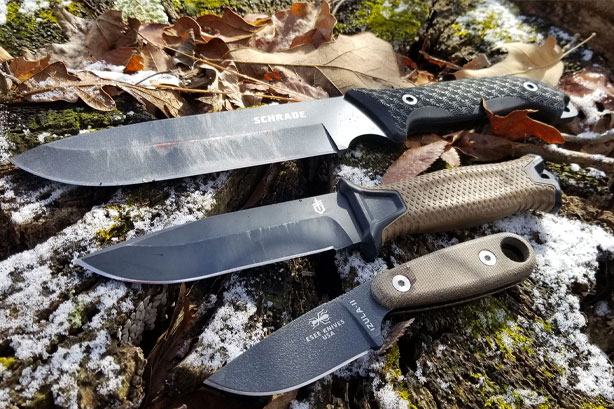
The conclusion
At the end of the day, when you’re looking to choose between different knives, the biggest factor to consider is how you plan to use it. And be candid in your expectations too. If you’re assembling a hiking or survival tool kit, remember that it’s very possible that you’ll need more than a single type of tool to perform multiple jobs.
If you genuinely need a camping shovel and a saw to round out your equipment, then don’t hesitate to get them because using your knife within its operational parameters is as vital to preserving its usability as it is to maintaining your personal safety. Don’t hesitate to contact the outdoor knife experts when you’re ready to purchase your knife. They’ll have the knowledge and the selection to help you choose the one that’s just right for all your outdoor activities.






